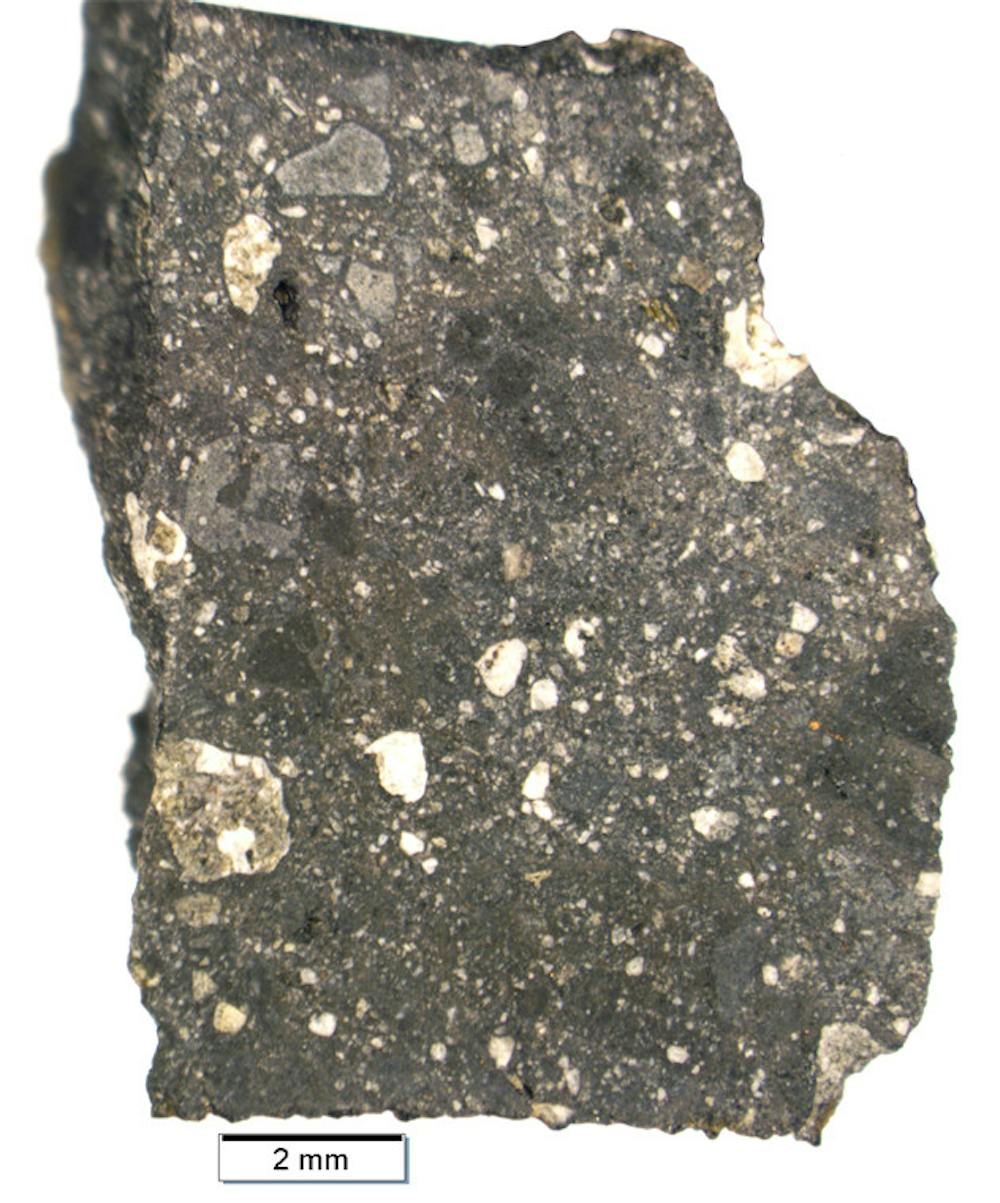University researchers who study Northwest Africa 7034 — an estimated 2-billion-year-old meteorite found in the Moroccan desert in 2011 — have concluded that it is likely representative of most of the rocks comprising Mars’ crust.
The paper, which will appear in the May 15 edition of the journal Icarus and is currently available online, analyzes a sample of the meteorite, which researchers have nicknamed “Black Beauty.”
“The meteorite has these remarkable properties,” said Jack Mustard MSc’86 PhD’90, professor of earth, environmental and planetary sciences and environmental studies and a co-author of the study. “It’s not like the Martian meteorites that we’ve seen previously. It has a different color and texture, and it has a lot more water than any other Martian sample we’ve ever seen.”
Kevin Cannon GS, the lead author of the paper, said he was struck by “how good the Black Beauty match was to the surface of Mars” in that data collected from Black Beauty corresponded to data collected by satellites of the Martian crust. Past meteorite samples did not match with the satellite measurements, Cannon added.
Cannon and Mustard, along with Carl Agee, professor of earth and planetary sciences at the University of New Mexico, used a hyperspectral imaging system to measure the reflected light from the meteorite and compare its properties to the satellite data, Mustard said.
The meteorite is composed of breccia, a type of rock that is created by impacts on the surface of a planet, Mustard said.
“If you take a sledgehammer and whack away at a rock, you would create fragments of the rock. And then, if you were to mix it with some kind of glue and solidify it, that would be like breccia,” Mustard said. “It’s a rock made of rock fragments that are solidified in the end.”
Cannon said that the meteorite indicates “how dominant these impacts have been on Mars’ surface in creating the rocks that are there today.”
In the future, researchers may use satellite data to find the areas on Mars where there are significant amounts of breccia and send rovers there to collect further samples, Mustard said.
“We should follow this up with a targeted sample return mission to Mars to understand the geological context in which this important sample was formed,” wrote Professor of Earth, Environmental and Planetary Sciences James Head III PhD’69, who was not involved in the study, in an email to The Herald.
The study has “far-reaching implications for the geological and climate history of Mars,” Head wrote. “The work of this team helps unlock the secrets of how we can effectively use remote sensing data to understand Martian early history.”

ADVERTISEMENT




